Time for week eight of a twelve week semester and I was first again to get into the classroom and begin some work on my dissertation. I’ve been struggling a little with how ‘m going to tie together all of the information that I’ve found in the research already so I’m looking forward to getting some direction from Gavin, my tutor, as to how I should proceed.
Gavin’s first mention was the draft hand in on the 9th December when we should have a full draft ready.
It should be as close to the 5000 words as possible and in a near as final state as possible.
Gavin will then provide some feedforward. and allow us to fine tune it for the second semester ahead of handing it in at the end of the academic year. After the draft hand in we’ll be looking at doing something else in the Tuesday morning sessions such as CVs, websites and portfolio creation.
We also have next week to be working towards, Week 9, and a review of the Independent Practice Project for the whole group. It will consist of some slides explaining my progress so far and including some images that I might want to consider for the Interim exhibition.
One of my course mates spoke to me about some of my Shirehall photos and videos that she was particularly complimentary about. We also had a chat about her work which features small figures of humans that appear in a scene with an oversized (relative to scale) strawberry or cabbage leaf etc.
Tutorial Time
Dissertation
Had a chat with Gavin about my dissertation and we discussed the difficulty of capturing a synthesis when he mentioned that it could be used as a tool kit for managing grief in the event of a building demolition in the future. As I am quite a practical person it could result in an aid for “change Management” This is a useful tool for the future also and is also a form of synthesis.
So my dissertation will now be considering grief, what it is, how we grieve, and why we grieve. Followed by examples of grief practices around buildings etc and some citations back to works around this topic before heading into the last part of it.
The last part would be the creation of a set of guidance to an organisation planning on making a big change to a workplace or a cultural or historically significant building. A toolkit if one prefers of how to engage with a building that might have some emotional connections and a way of coming to terms with the “loss”. Maybe photography, writing or art projects to document the building before the changes occur.
Independent Practice
Then Gavin and I had a discussion about the practice project and where I was up to. He’d seen some of the printing off the walls videos and images, along with some of my drone shots etc.
I showed the sliding puzzle that I’d 3d printed and how I’d considered painting the top of the sliding tiles the same as the mosaic tiles. We discussed how it could be used and whether it needed to be used, the sliding puzzle could be left as it is in it’s concrete looking form. I had thought yesterday about making some moulds from the plastic parts and then create the parts of the puzzle out of concrete. Gavin thought that this was perhaps going too far and unnecessary as part of my project. I tend to agree with him but I might still ahve a look at doing something like this. I’d also thought of creating a Rubiks cube style object with the faces painted as per the mosaic tiles.
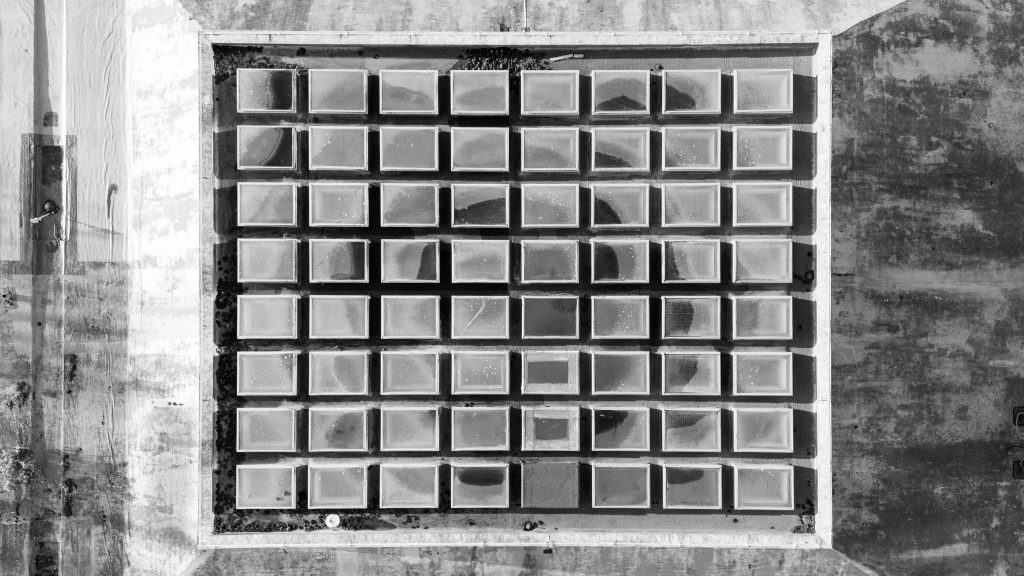
He was happy that some of the work that contains a square or rectangle could be cropped to a square or a composition to suit the contents of the image. Makes perfect sense I guess, if I am photographing square mosaic tiles, and square building features then why not present it as a square form on the wall?
Guest Speaker
Following on from last weeks talk today we had a presentation from David English.
https://www.instagram.com/davidenglishstudio/?hl=en
He studied photography and graduated alongside our tutor Sam from Gloucester in 2010.
Started off with some event photography and got picked up due to his photography to go and photograph university sports teams and summer balls etc around the UK.
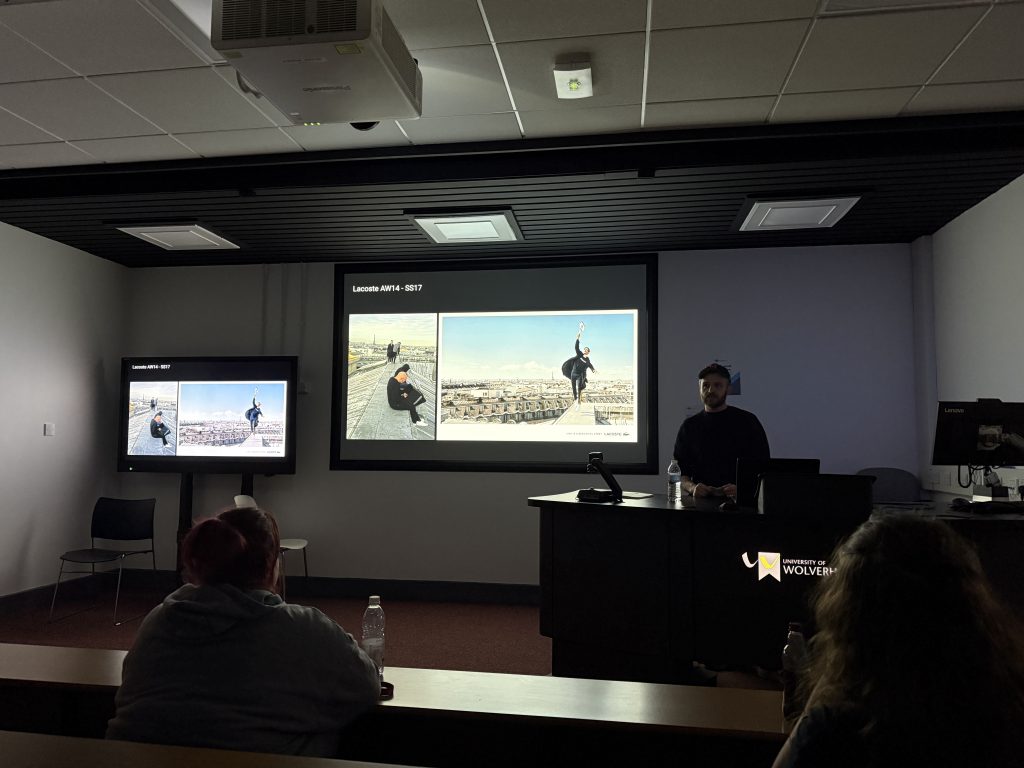
Left Uni with no real idea of what to do and thought he might get into fashion and sports photography.
Worked at Spring Studios 2011-2013 – studio setups, assistant coffee etc and learning lights etc
Worked on Prada eyewear shoot with Gary Oldman and Willem Defoe in 2012 with David Sims. Acted as a production runner which was setting everything up for the shoots and treating the models like VIPs to get the best out of them.
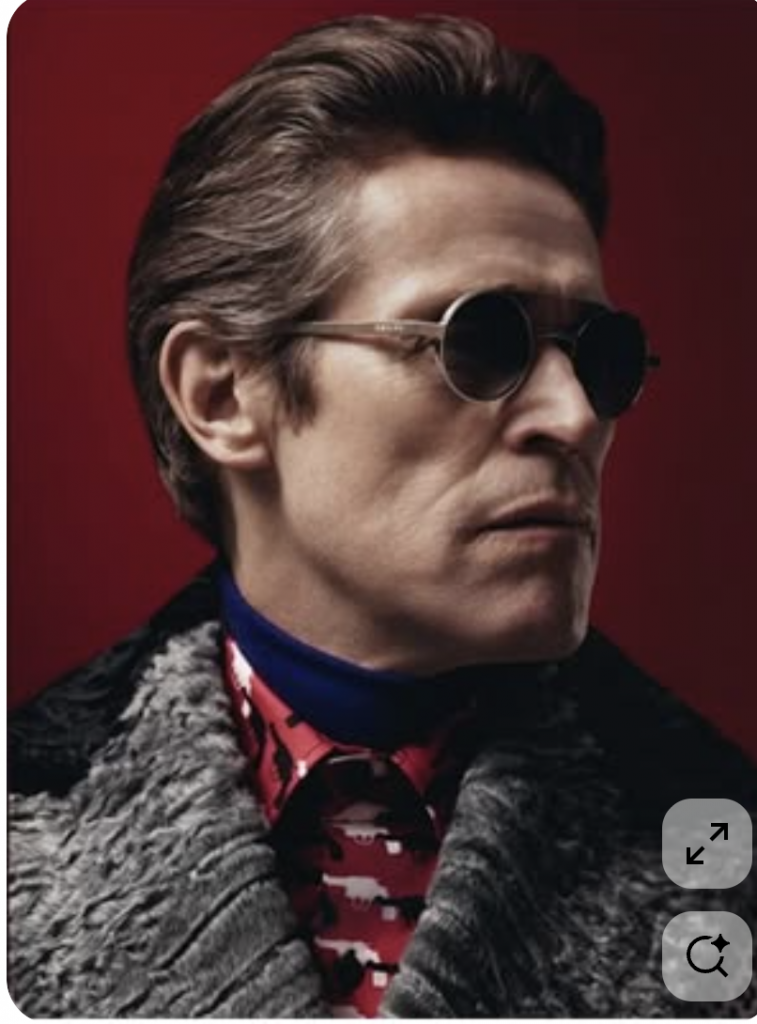
Inspired by, studied in his final year project and then worked with Jacob Sutton as a studio manager and digital operator 2013-2019. Some of the skills he picked up in Uni around using Photoshop using paths and other skills required for the works
Sutton is a video director too, utilising his skills in photography and applying them to video. Worked on various shoots around the world. Had to be working fast as the videographers are taking up more time of the day as they’re more expensive.
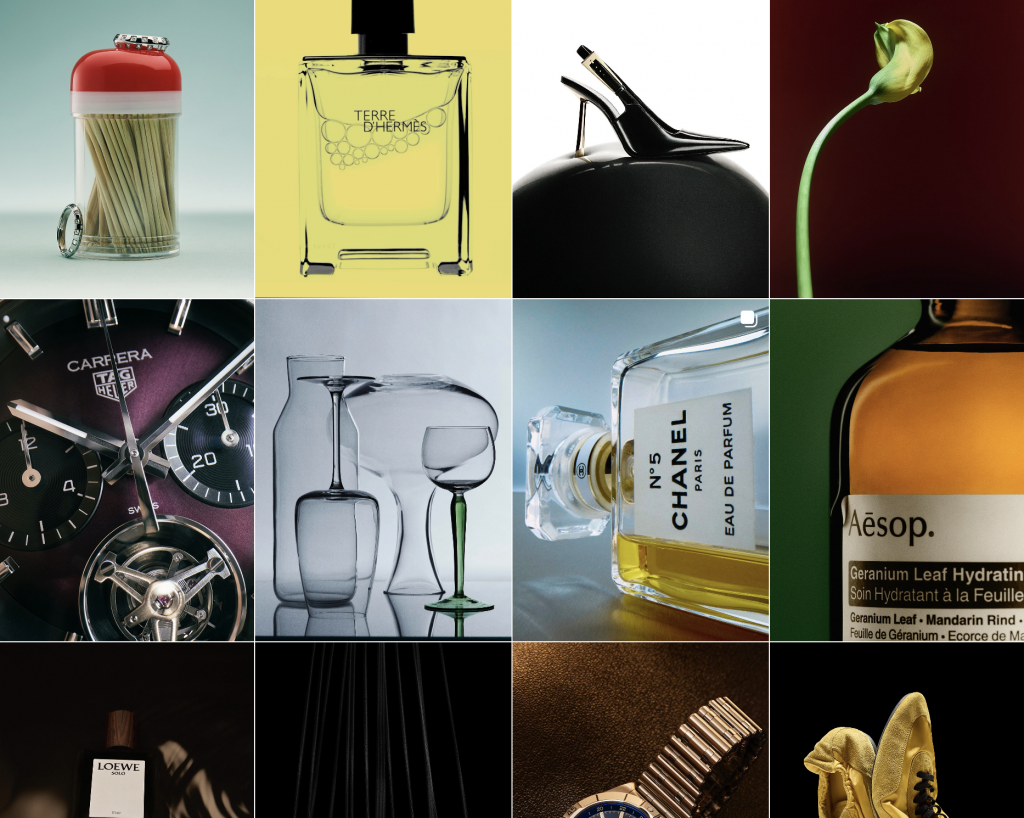
Showed us a Lacoste shoot where they had to “plate” the backgrounds (taking many shots on a tripod to get the most detail for the size of the billboards ) He told us that Novak Djokovic was a difficult person to photograph, but mainly because he’s a sportsman and not a photographic model and was being forced into an indoor clay court dressed up as an external shot.
David suggested that a good starting position is to give clients five pictures, if they ask for more give them five more if they ask for more. Rather this than send out hundreds of photos.
Works for Apple 2022-present, and went on a shoot in Sahara, Malta, Italy for the Apple Ultra watch
Since then, after seven years away from it, he’s gone back to his personal projects and it is wildly different from the pressures of working on a fashion shoot with many people buzzing around and having their own needs.
David explained that personal work is a good base for the editorial work he wants and has done practice shots of items that would then come in handy once commissioned by a brand to shoot something. They have found some of his work on Instagram and called him for this type of work too.
Jacob used to work with Dan Tobin Smith who is a still life photographer.
He has his own studio where he continues to produce work for different clients and still produces personal work that he does speculatively. He then sends off these items to a brand or company to try and get an “In” to work with them.
David also talked a bit about the technical side of the shoots and the different lenses and techniques used to capture the shots. He is a big proponent of the probe lens and is able to get much closer to the subjects and then use focus stacking to create a properly focussed shot across the whole plain. He mentioned also that there have been a few mistakes and didn’t realise that photos of watches should have the hands at ten to two or ten past ten to get the smiley face effect. He also mentioned that some of his works need retouching and also showed us a set of photos with the notes that came back from the client. It was notes on removing features of the photograph and sections that could be considered as troublesome for the whole look of the shoot.
He mentioned lighting a lot too and often uses a mixture of constant lighting and flash lighting. He shared some photos of a desert shoot where his dad had created a helium ballon with a constant light inside it that floats above the scene producing an alien abduction style type of lighting. This was an interesting point too.
Conclusion
It was a good talk from a pro photographer with much experience and it was really kind of him to come and share it with us. For me though I’m not 100% sure that it means a huge amount to me. It has put me off any sort of fashion photography or sports brands photography owing to the amount of prep work and post processing that is needed before taking into account the actual shoot. I can’t ever see me getting involved with fashion or anything that deals with people hence why I shoot buildings and places.
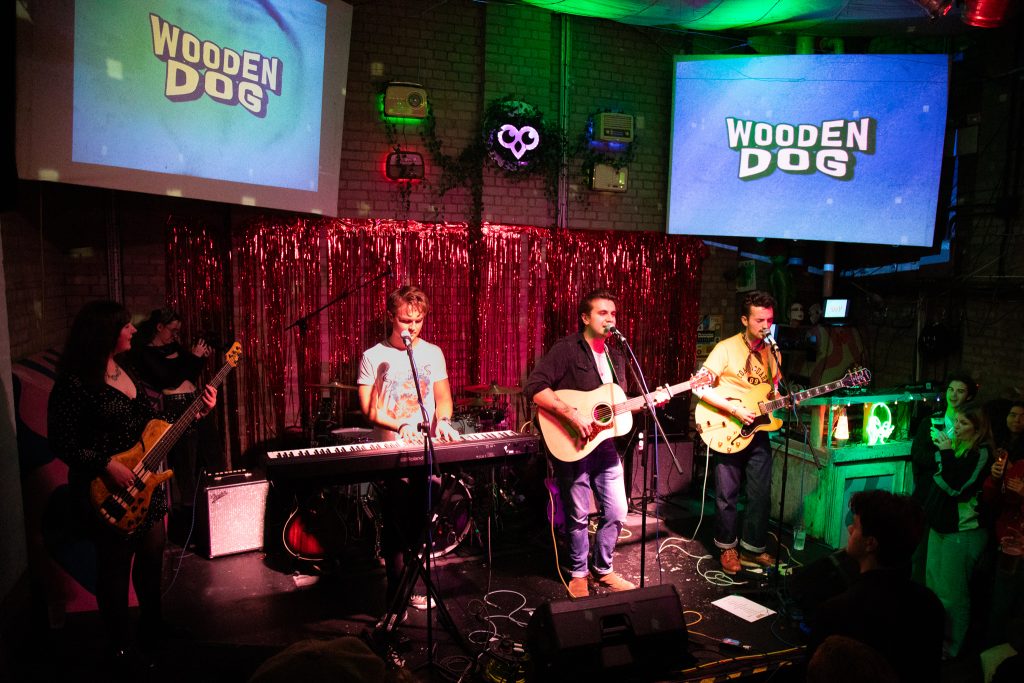
Saying that though I do shoot events, gigs, and all sorts of places where there are opportunities for candid shots. So maybe I’m not that averse to the people but the more formulaic approach to shooting with he lighting and studio set ups etc.

Be First to Comment